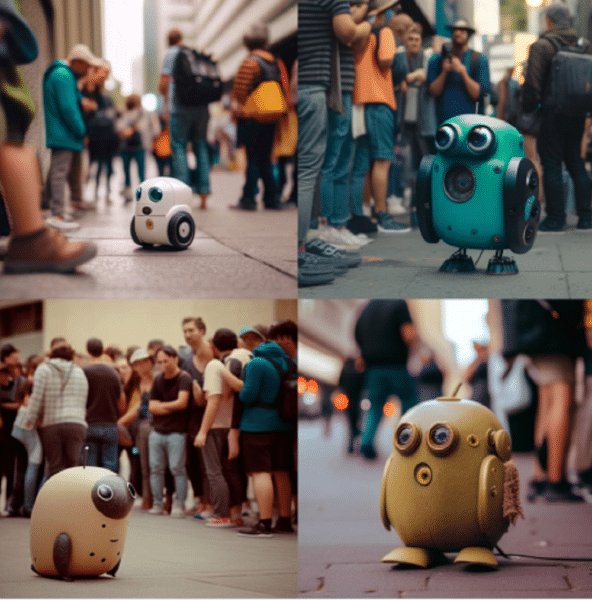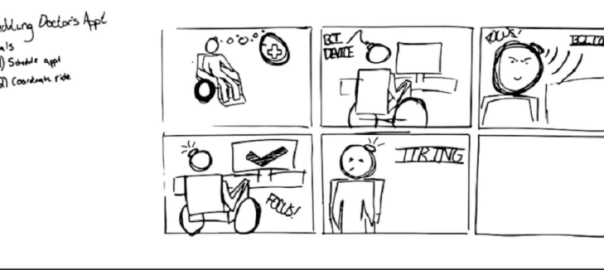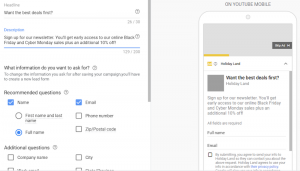UC Berkeley partnered with Storyblok to explore adventurous innovations that might shape the future of the Internet.
A two-day design sprint hosted by the Jacobs Institute for Design Innovation at UC Berkeley, in partnership with headless CMS Storyblok, produced some audacious and potentially game-changing concepts about how “the future of web” might develop.
The contestants were UC Berkeley students from various disciplines (plus one or two alumna) and the awards were made by a panel of judges. According to Kuan-Ju Wu, a professor at the Jacobs Institute, the team were encouraged to look at current technology — “at signals from the space” — and then imagine what the future might be like.
Why we care. No, none of this needs to be in your marketing budget for 2024. One thing to understand, though, is that this contest got underway before everyone was talking about generative AI and ChatGPT. Which goes to show that there are many other concepts out there that could significantly change the internet and our relationship with it. Imagine how some of these concepts could play into marketing strategies…one day. “In this society, it’s really hard to determine how fast those ideas could become (reality),” he told us.
And the prize goes to…
Here are the winners in each of five categories.
Community choice and best technical concept: Web decentralization
According to the winning team, the future of the internet is about “creating systems where end-users get closer to the design process. Websites are no longer a form of presenting but also a tool for us to personalize our digital world and experience.”
As Wu described it: “Everyone has their building blocks to create their digital version of their own realm. In this future, it is all connected; they can share, they can transform data. It’s a combination of the new web and Minecraft. They use Minecraft a lot as an analogy.”
Dig deeper: Metaverse, Web 3.0 and NFTs: What marketers need to know
Best inclusive focus: Thought-to-thought
Two teams won awards based around brain computer interface (see the fifth award below) — probably, thought Wu, because there had been a recent conference on the topic. This involves a developing, real world technology aimed at using signals from the brain directly to engage with computers or other external devices.
Wu admits this project was “pretty wild” and one of the most speculative in the contest. “What interests me is that they touch on some ethical elements in this idea, because when you’re sharing your thoughts with other people, you have to build up a trust relationship. You’re enabling people to read your mind.”
Best social impact: Finding heart in Woven cities

Perhaps the cutest element here is the small (and frankly, stealable) robot dreamt up by two architecture students and a computer science student interested in public health. “Basically, the robot is just an agent, just a platform, like a repository for your idea or thought,” said Wu. It can be seen as a mobile billboard.
The robot would roam freely so encounters with it would be spontaneous. The genesis of the idea lay in the isolation of the COVID era and anxiety about speaking with strangers. (Woven City is an imaginary community.)
Most Actionable: Interspace
“Interspace is between intraspace and outer space,” explained Wu. The team were reflecting on the current state of social media that encourages individuals to present an outer face to the world, quite separate from the inner space of their own thoughts and feelings or relationships with close friends and family members.
“Those two spaces can mingle,” said Wu. The final concept was a wristband (inspired by the Tamagotchi device) that easily allows users to toggle between their inner self and outer brand when engaging with others.
Best blue sky: Brain computer interfaces

Being able to detect brain actvity like alpha waves — that’s old technology, Wu said. “I think the newer one will allow you to have a more sophisticated understanding of the signals from the brain and to analyze them.”
The vision here includes the revolutionizing of content creation as well as support for people who are impeded in the use of a normal mouse and keyboard, for example by neurodegenerative disease.
What will digital content look like in the future?
Brandon Watts, a senior manager at Storyblok, explained how this first collaboration with the Jacobs Institute came about. As a headless CMS, Storyblok can send content to all kinds of existing devices and channels. “One of the things we’re most interested in is what type of content platforms are going to exist in the future,” Watts said, “and of course we can speculate all day long, but we thought this was a cool opportunity to partner with Berkeley and get students on the ground to make an educated guess about where things might go.”
The concepts may seem ambitious but there’s always a content management element, Watts explained, because the content needs to be stored and somehow delivered. “With Storyblok, it doesn’t matter what platform it is — it’s all API-driven — so we could be communicating through a robot as easily as through a brain computer interface or anything like that.”
The main takeaway? The future could be much more personal and much more inclusive. “Instead of companies blasting out content on a billion different channels, these visions were all very one-to-one. What does that content journey look like?’
The post Beyond boundaries: The future of digital content appeared first on MarTech.
(7)
Report Post




